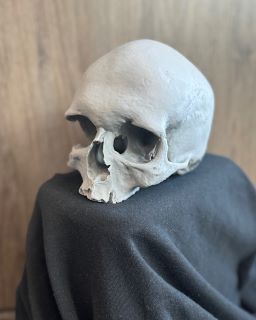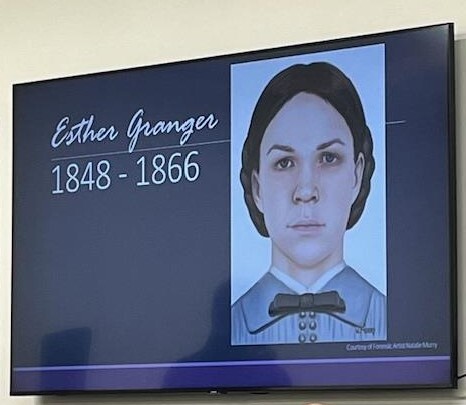Kanecountyconnects.com
The identity of a partial skull found behind a wall in a Batavia home in 1978 has finally been confirmed as Esther Granger, a 17-year-old woman who died in 1866 in Merriville, Indiana, likely from childbirth complications.
The remains were first found in November 1978, when a couple remodeling a Wilson Street home uncovered a bone, initially thought to be a lower jaw, inside a wall. Further investigation revealed a partial skull, which was then sent to Northern Illinois University’s Anthropology Department, where it was confirmed to be human. Early testing suggested the woman was in her mid-20s at the time of death, and the skull was significantly older than its 1978 discovery date.

The skull was later donated to the Batavia Historical Society, where it remained until 2021. At that time, it was turned over to the Batavia Police Department, which contacted the Kane County Coroner. The case was assigned to the cold case division, and a profile was created in the National Missing and Unidentified Persons System (NamUs). Although NamUs did not provide an identification, it facilitated collaboration with Othram, a Texas-based forensic genetic genealogy company. Using advanced DNA techniques, the Kane County Coroner’s Office and Othram successfully identified the remains, making this the oldest identification in Othram’s history. The process was partly funded through a $7,500 crowdfunding campaign.
The circumstances that led to Esther Granger’s remains being hidden in Batavia are still unknown. One theory suggests that she may have been a victim of grave robbery, a practice not uncommon in the 1800s when physicians sometimes paid for bodies to study human anatomy. The St. Charles History Museum documents a similar case in the area, where a grave robbery led to unrest and the death of a doctor. Burial records indicate that Esther Granger was originally interred in Lake County, Indiana.
A great-great-grandchild of Esther Granger was eventually located and provided DNA, which confirmed the identification.

The relative, Wayne Svilar of Oregon, is a retired police sergeant who, coincidentally, had previously worked on a cold case team. He attended the news conference announcing Granger’s name and admitted that, at first, he thought he was being scammed.
“My wife called me at work and said we just got the weirdest call,” Svilar said.
However, after multiple conversations with the Coroner’s staff, Svilar became convinced that the situation was genuine.
“What convinced me was their passion for their work and their commitment to what they were doing,” he explained. Svilar later returned for the burial, honoring his newly identified ancestor.
A private reinterment ceremony took place at West Batavia Cemetery, with a columbarium niche donated by the city. It was attended by members of the Coroner’s Office, Batavia Police Department, and Svilar, restoring dignity to Granger after more than a century.








